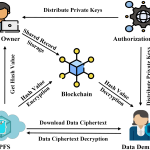
Incident reporting systems help companies reduce injury rates and streamline operations. They also ensure that adverse incidents are quickly and accurately communicated across the organization.
Safety teams can develop evidence-based field practices based on real data. They can also modify training and policies to protect employees better.
Improves Communication
Communication is key to a successful incident management strategy, enabling employees to file reports and share information timeously. This allows management to respond quickly and engage with employees on incidents before they become serious, keeping them safe and creating a positive environment for everyone.
An incident reporting software helps employees consistently report incidents and observations, using templated forms across your organization. This ensures that the data gathered is accurate, timely, and relevant.
It can also help identify root causes that are causing safety incidents and near-misses. This enables your company to take corrective measures, such as increasing the number of safety training sessions or improving the quality of post-training tests.
A software-based incident reporting system is easy to use and accessible on all devices. This makes it simple for employees to report any safety incident – accidents, near-misses, and more – with just a few clicks of a button.
Using a software-based approach to safety incidents and near misses is a great way to improve workplace safety, reducing the likelihood of future accidents and injuries. This is especially true if your incident reporting software offers the option of a root cause analysis feature to identify the most important causes of an incident or near-miss.
Detects Root Causes
To ensure effective risk management, it’s important to understand the causes of incidents. By detecting root causes, incident reporting software can help organizations prevent incidents from happening in the future. For example, it can help detect issues that may lead to workplace accidents, such as a lack of safety training and low employee post-training test scores.
Incident management software provides a single source for monitoring your organization’s security events and alerts. These tools monitor data from log files, error messages, firewalls, and intrusion detection systems and analyze it to determine if it represents a security incident.
Automated network and system logs analysis can identify suspicious, abusive, or unauthorized activity that should be escalated to the security staff. Early warning triggers, such as system availability or application performance problems, can be identified and mitigated before they cause major disruptions to business operations.
Effective incident response requires a comprehensive and robust investigation of the root cause of any security breach or IT incident. It also involves limiting the impact of an attack and implementing fixes as part of remediation. These steps can take time, but they’re crucial in preventing similar attacks in the future.
Maintains Regulatory Compliance
Whether you’re a startup company or an established institution, maintaining regulatory compliance with safety regulations is crucial for your operations. Incident reporting software can help you comply with these regulations by making it easy to capture, record and manage incidents in a single, central location. In addition, it will help you track incident trends and determine which processes are working well.
A good incident management system also helps you prevent incidents from occurring in the first place. It can be used to collect information on workplace hazards, identify risk factors, and provide training that will help your employees understand the potential risks they might face.
It also helps you manage your claims and keep up with disciplinary processes, and it can even be used to document your employee’s health and safety training records. This will help you demonstrate that your organization is dedicated to protecting its workers, and it will save you time and money in the long run.
To maintain regulatory compliance, your incident reporting system must also be able to easily upload policy documents so that everyone in your organization can access them quickly and accurately. This will ensure that you don’t miss any deadlines and keep your compliance efforts on track.
Improves Patient Safety
Patient safety is a complex area that requires continuous improvement. Incident reporting is a part of this greater effort that helps detect organizational flaws and failures that can lead to harm.
Researchers have found that incident reporting is most effective when it is part of a larger strategy focusing on preventing harm, not just finding errors. When organizations focus on preventing incidents, it makes them more likely to catch errors early and proactively prevent them from happening in the first place.
Unlike legacy systems that discourage staff from reporting incidents, this software is designed to be easy to use and accessible on any device with an internet connection. This means that staff can report incidents on the go and upload the data when they regain connectivity.
In addition to making it easier for staff to report, incident reporting software can help improve patient safety by identifying potential hazards and mitigating risk. This helps ensure that all patients are protected from potentially dangerous situations, whether in the emergency room, at home, or on the hospital campus.









